Good Night everyone for all of our friends who are at Blurtter and have been joining Blurtter for a long time, hopefully we are always healthy and can always carry out activities as usual. So on this occasion I want to write a little bit about Orthodera Ministralis hopefully later it can become a memory for myself, and for other friends who are already married, don't forget to also give directions and input if later in my writing there are still words- words that are not polite, therefore I apologize once again.
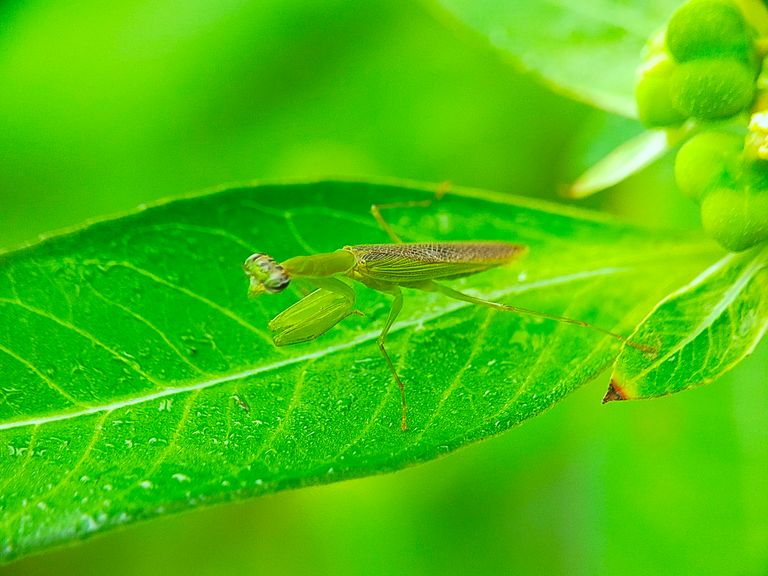
There are so many types of animals that we know in this universe, as well as the types of grasshoppers that we have seen, and until now these types of grasshoppers are difficult for us to see. The grasshopper that I want to write about today is the praying mantis. The mantis or praying mantis is an insect that belongs to the order Mantodea. In English, this insect is usually called praying mantis because of its attitude which often looks like it is praying. The word mantis comes from the Greek "Mantes" which means "prophet" or "fortune teller". Most occur in tropical or sub-tropical areas, but some species live in temperate climates, such as the northern United States, Central Europe, and Siberia. The mantis belongs to the Mantidae family. The mantis is one of the few insects that can turn its head. Several texts refer to the European mantis as the most common mantis in European countries. Ischnomantis gigas is the largest mantis with a length of 17 cm for the female, and is found in the Sahel region of Africa. The smallest mantis is Bolbe pygmaea, which is only 1 cm long at maturity. A pregnant female mantis produces a large mass of foam, called the ootheca. This ootheca can hold up to 300 eggs, all of which are protected in a foam bag. These oothecae are produced in autumn —after which the adult mantises die—and hatch in up to five months. Some species hatch in small intervals, and the hatching process can take up to five weeks before the fully fledged larvae emerge. Pregnant female grasshoppers not only produce oothecae, but also oothecae that are not fertile by female grasshoppers that have not been married. Occasionally a larva or two hatch, but this is rare. Some species, such as Brunneria borealis, produce oothecae by parthenogenesis. Under these circumstances, male locusts are not needed to produce a fertile ootheca; however, all grasshoppers resulting from this process are female. In the US, species of mantis were first introduced from Europe and China around 1900 as garden predators in an effort to control pests. The Carolina mantis is the official state insect of South Carolina, and the European mantis is the official state insect of Connecticut.
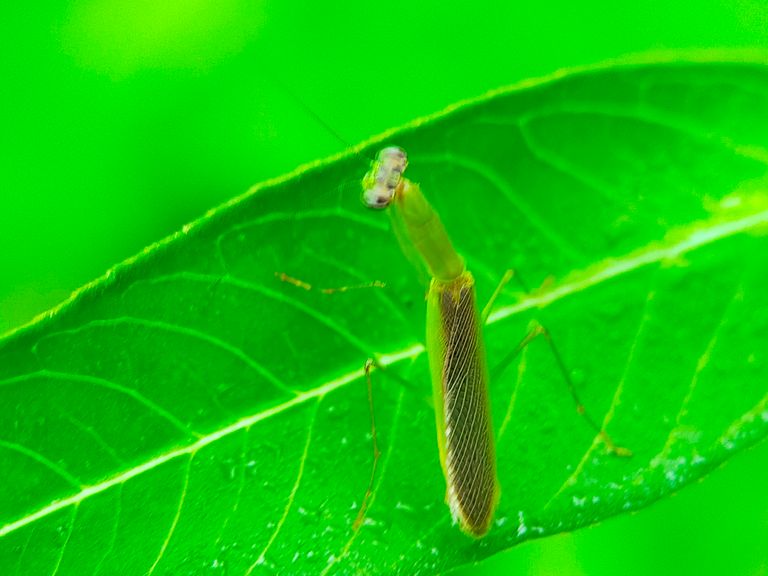
cute and looks beautiful. Have you ever seen a praying mantis mimicking the color of a plant? Having the property of changing color according to the color of the plant it occupies, that is the praying mantis. Praying mantises are not always brown, green and yellow on their bodies and wings. This insect species is Creobroter gemmatus family Hymenopodidae from the Order Mantodea. This beautiful insect comes from the regions of South Asia, Southeast Asia, Vietnam, this insect has a regionally distinctive name, namely the Mantis Flower Jewel or the Asian Flower Locust in India. Praying mantises are well adapted and camouflaged. Relying on the color of its body which is green with white stripes, it is able to perform aggressive mimicry so that its enemies cannot recognize it, forms camouflage colors and patterns to lure prey. This praying mantis has the characteristics of alternating white and green spots on its abdomen, claws on its front leg. It has colorful wings, while the female grasshopper has a green color with a central area such as brown, yellow and white eyes, the inner wings are pink and then dark on the underside. The male praying mantis has faded pink inner wings and then brown underneath. The praying mantis has a habitat in grass, bushes, branches of plant twigs and on brightly colored plant flowers. The praying mantis is assisted by a type of chewing-biting mouth that has cannibalistic properties, namely eating the male praying mantis when copulating or mating. Flies, moths and butterflies are another food for these insects.
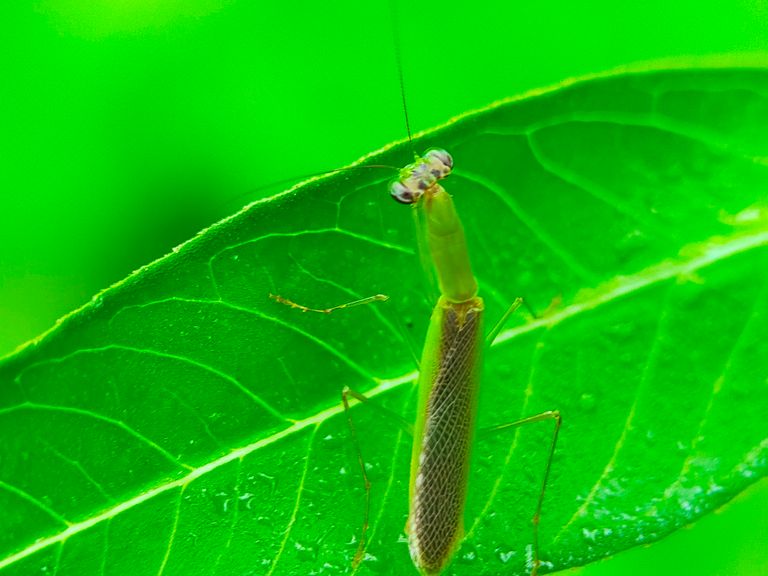
Today we will talk about medium-sized insects, which are famous all over the world and can help control other insect pests on plants. It's about the praying mantis. These are insects known the world over for the odd position that their front legs have in such a way that it gives the feeling that they are praying. Although mostly found in the wild, it can also be seen as an exotic pet in some homes. It is an animal species that has high aesthetic qualities that serve as pets and as pest control assistants in plants. In this article we will tell you all its characteristics, habitats, curiosities and how praying mantises can help us in growing crops. These are an insect that is about 10-12 centimeters long. Females are usually slightly larger than males, so it's easier to tell them apart. These insects have a slightly elongated shape and have two long antennae protruding from their heads which they use to sense everything around them. Interestingly, the front legs are in a position similar to those used when we pray. Hence the name praying mantis. It has many spines that help to groom and defend prey in these claws. The color of the praying mantis depends on the environment in which it was found and where it last shed its skin. Usually this color usually varies from green to brown. The ability to change color depending on the ecosystem in which it is located is a very interesting camouflage ability. He uses it to be able to hide from some predators and surprise his prey.
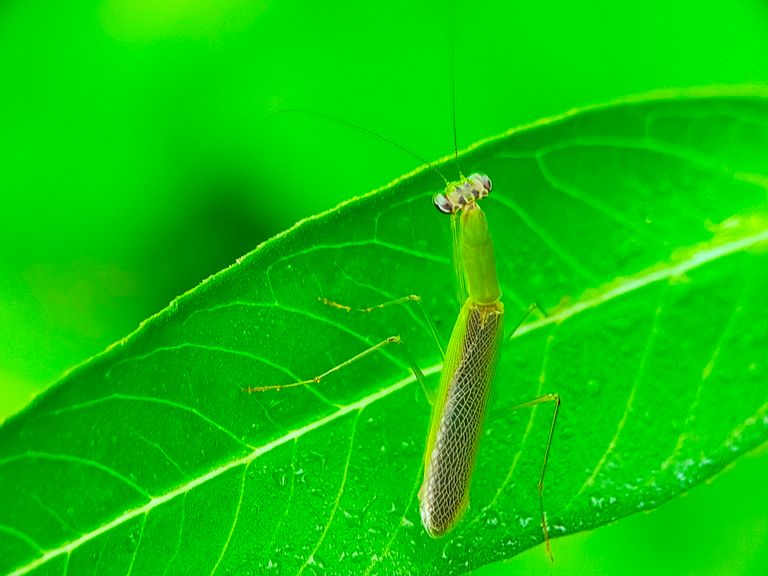
The life expectancy of these insects is approximately one year. So far this year they were able to spend about 6 times as much. That's when they reach their adult size. These insects hatch from eggs laid by their parents. Hundreds of eggs are laid in each clutch. When they are young they look the same as adult praying mantises, but are smaller in size. It is not an insect that changes morphology during its development. Contrary to popular belief, these animals do not bite or are poisonous. One of the advantages that these insects offer plants is that they help control certain insect pests. They are especially good in open spaces, so these are beneficial insects in our gardens and gardens. These are carnivorous predators and very patient. In order to catch its prey, it can wait while barely moving for a long time to stun it. When it comes to attacking, he does it very quickly. They eat mainly moths, flies, grasshoppers, crickets and other small insects. There is some evidence that this praying mantis can catch small amphibians and reptiles, even small birds. Hummingbirds are very small birds and there are studies that suggest that praying mantises hunt them. To hunt for prey, it uses its powerful forelimbs. They are capable of shooting at speeds invisible to the human eye and capturing prey with their spines. They are usually solitary insects that live independently. They only join with other individuals to mate. If several males coincide, they will fight to the death so that the survivors can mate. One of the most well-known female behaviors is that some of them eat the male's head after mating. However, this is a much more common behavior than you might think.
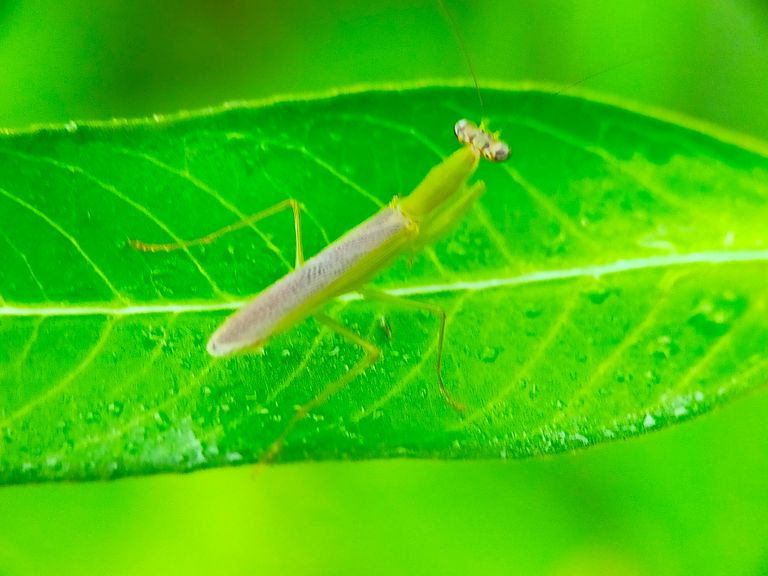
The range of these insects begins in Europe and Asia. His name was introduced to him in North America. We can find this insect in almost all of Europe and in the upper two-thirds of Asia. Its main habitat is fields and orchards. They are usually found naturally in grasslands or other less humane places. This is not an easy insect to find because it has good camouflage abilities. They are camouflaged in grass, leaves and tree branches. Because of this, they take the opportunity to wait for their prey, taking advantage of camouflage and a favorable environment. As we mentioned at the beginning of the article, these insects can help us control pests on our crops. Be it an orchard or any garden, these insects can protect us from several pests. The main advantage of praying mantises with other insects that also help as biological controllers is that they don't wait until they are adults to start devouring everything they find. Smaller specimens bet on aphids and other smaller insects. The largest are bugs that trap bugs of any size. They are even advised to catch frogs and some small birds. This can greatly help us to control some of the small insects that cause crop damage and decreased yields. If we have a garden, it will help the plants thrive in good conditions.
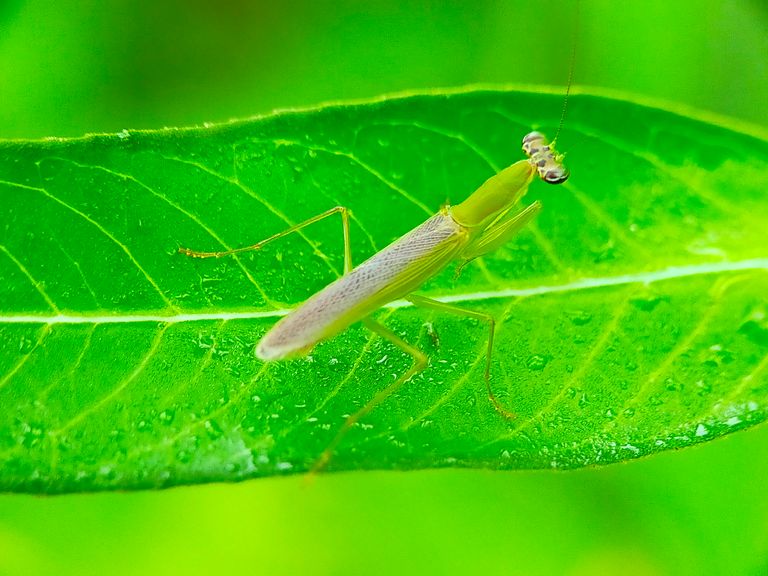
The world of insects is always unique to discuss, both the characteristics and characteristics of each the species. One of them is the famous insect with a posture that seems to be worship. Anyone knows? Yes, especially if it's not a praying mantis or in language England is called praying mantis. The praying mantis (Mantis sp.) is an insect that belongs to the order Mantodea. Local names also vary, such as congcorang (Sundanese/Betawi), walang kadung/kèkèk (Javanese), and mentadak (Malay). According to the National Seminar on Agricultural Research Results, Sriwijaya University (2010), this praying mantis has the characteristics of a large and elongated light brown body, short antennae, long prothorax, femurs equipped with thorns. The long and strong forelimbs are used to catch prey. This grasshopper has the ability to disguise itself as twigs, leaves and flowers. Quoted from the Journal of Biology Education, Bio-Edu (2016), morphologically the praying mantis has a slender body shape. Overall body length from head to tip of abdomen 85 mm. On the head there is a pair of antennae, with the type of antennae in the form of a filiform (antennas from the base to the tip uniform like threads), the eyes are faceted or compound eyes, the mouth direction type is hypognathic (vertical). On the thorax (the part of the animal's body that lies between the head and abdomen) there is the prothorax, mesothorax and metathorax where each of these parts has a pair of legs. The abdomen (body part behind the chest) of this grasshopper consists of 8 segments. The prothorax is long with a size of 18 mm. The first leg is 68 mm, the second is 64 mm, and the third is 72 mm with raptorial limbs.
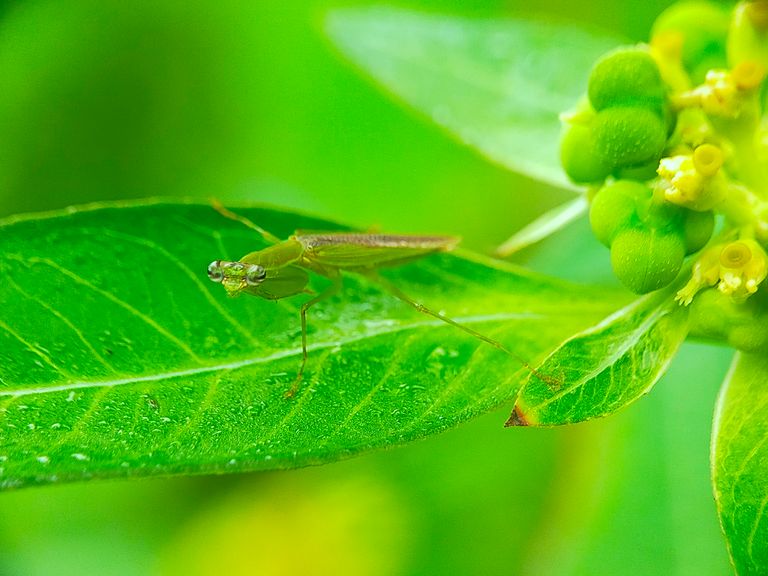
The praying mantis belongs to the polygophagous predator class. For information, the types of insect predators are divided into 3 groups, namely: 1) monophagous predators are predators that only eat one type of prey; 2) oligophagus predators are predators that eat several types of prey; and 3) polyphagous predators are predators that eat many types of prey. The advantage of polyphagous predators is that they can survive in conditions where the number of prey populations is small because they have the opportunity to find alternative prey. As a predatory insect, the praying mantis is an agile insect in hunting. He also does not hesitate to eat his own kind. Adult females will eat the males to serve as a food source for their eggs. In addition to their eating habits, praying mantises are unique in terms of sight. Quoted on the ationalgeographic.grid.id page, researchers from the University of Newcastle have learned that like humans, praying mantises have eyes that are able to see their prey in three dimensions, which is called stereopsis. When humans and other animals function stereopsis by comparing the brightness levels of two objects that are seen separately by their eyes, grasshoppers actually focus on the changing brightness levels between the two objects that are visible from their eyes. This technique allows the praying mantis to measure the distance to an object even though the object has been obscured with the same background as the shape of the object. Of the various uniqueness, there is an interesting story about the praying mantis. In China, the praying mantis is used as an inspiration for one of the styles in Kung Fu martial arts. It all started with the inventor of Praying Mantis Kung Fu martial arts named Wang Lang. In a martial arts championship, Wang suffered defeat. After the match, he saw a praying mantis fighting with a cicada (chikad). Inspired by the movement of the praying mantis against his enemy, Wang created the praying mantis kung fu style which is famous today.
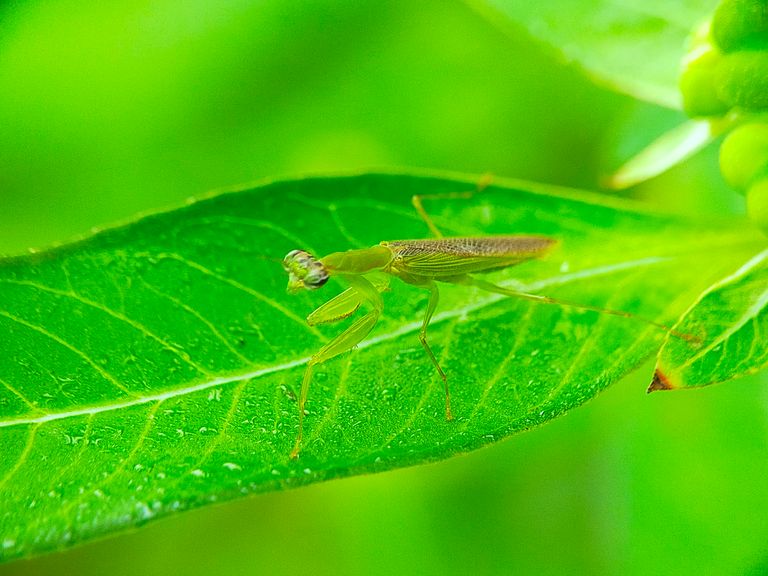
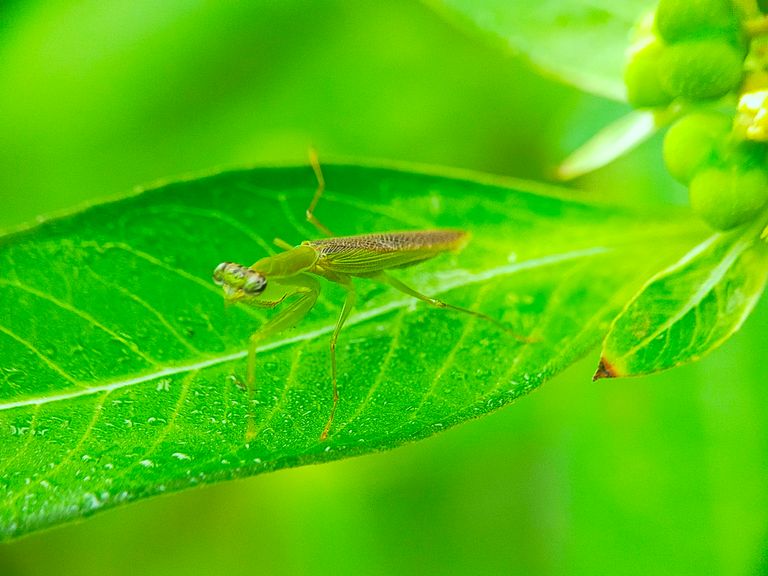
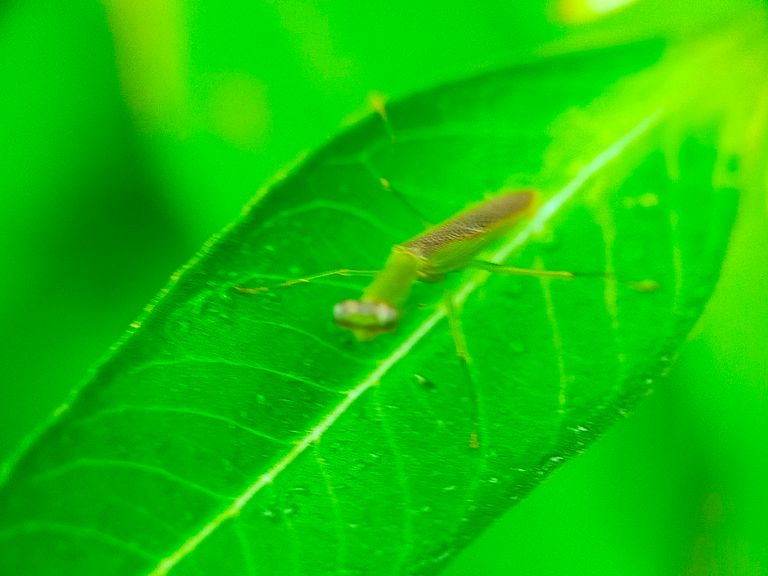

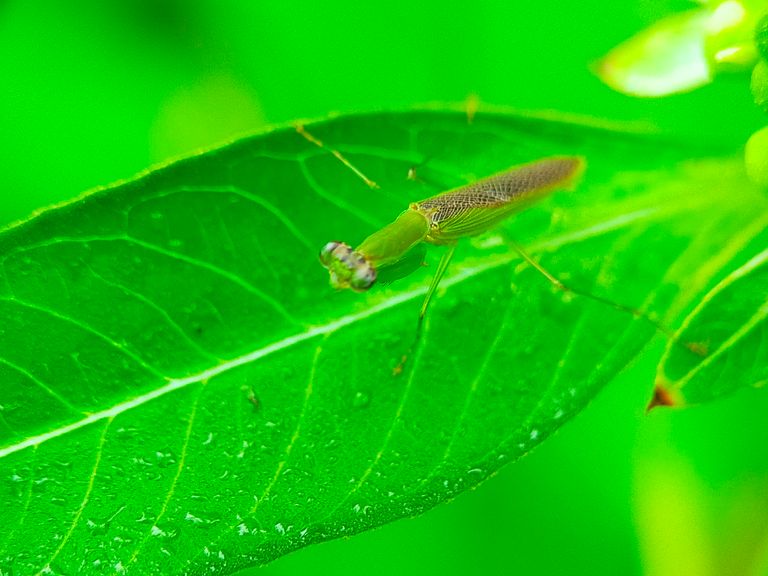
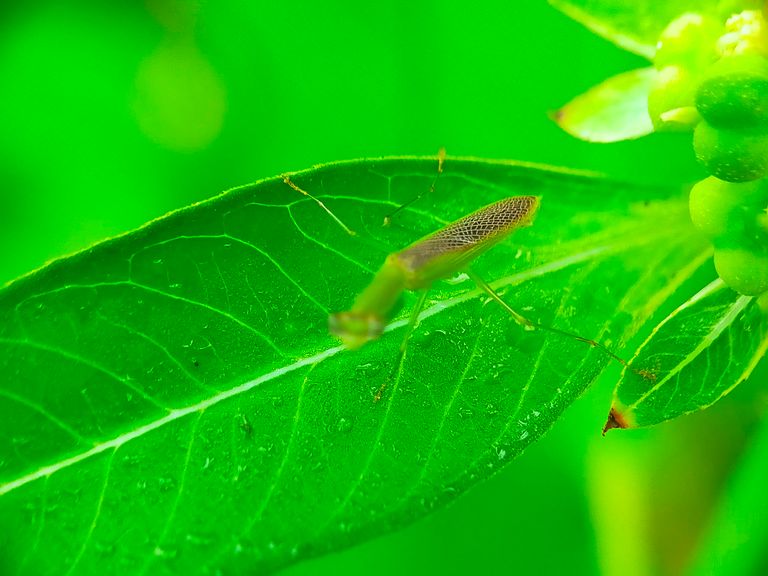
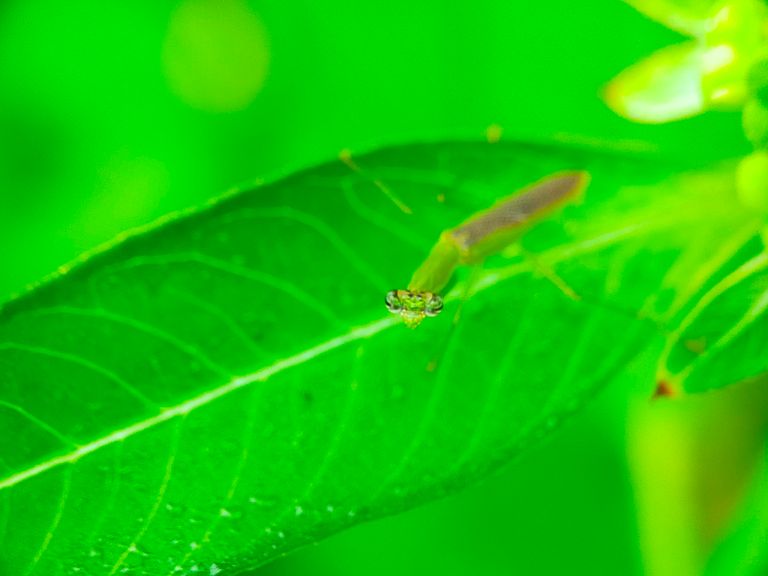
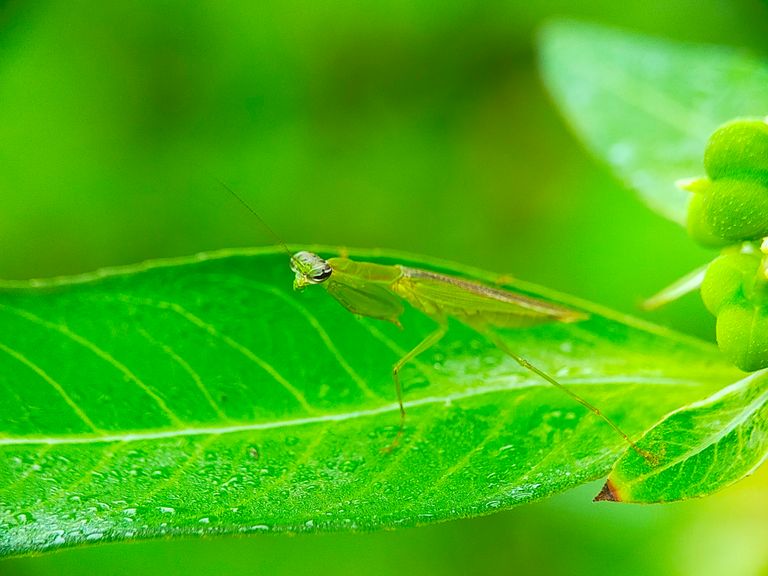
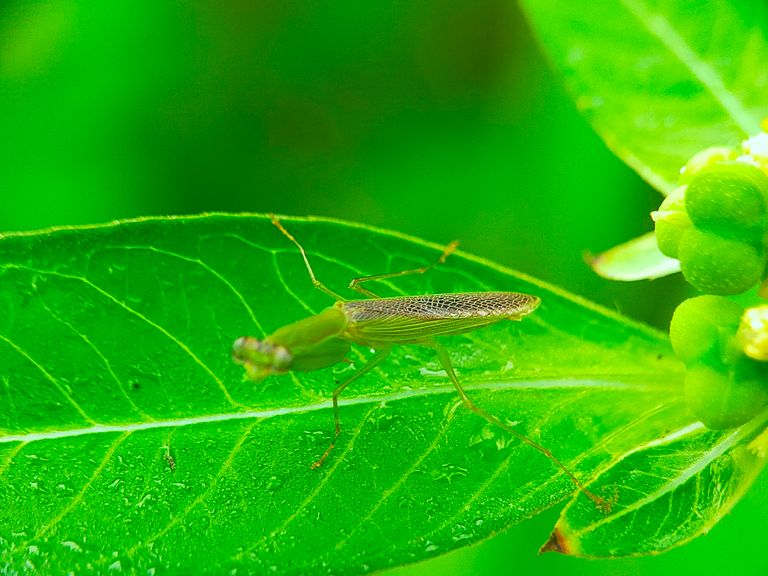
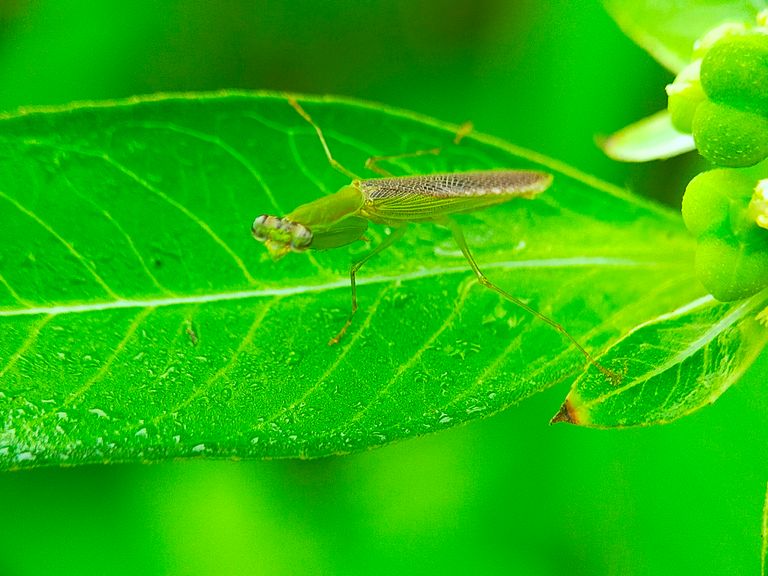
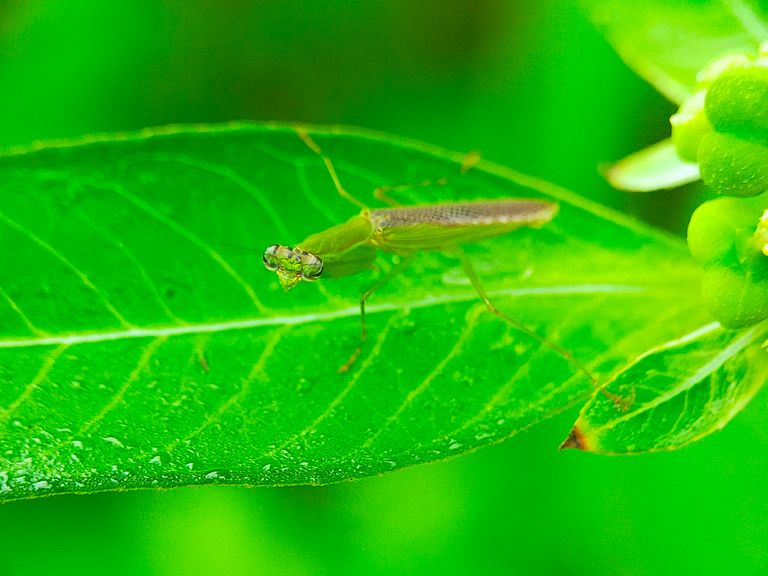
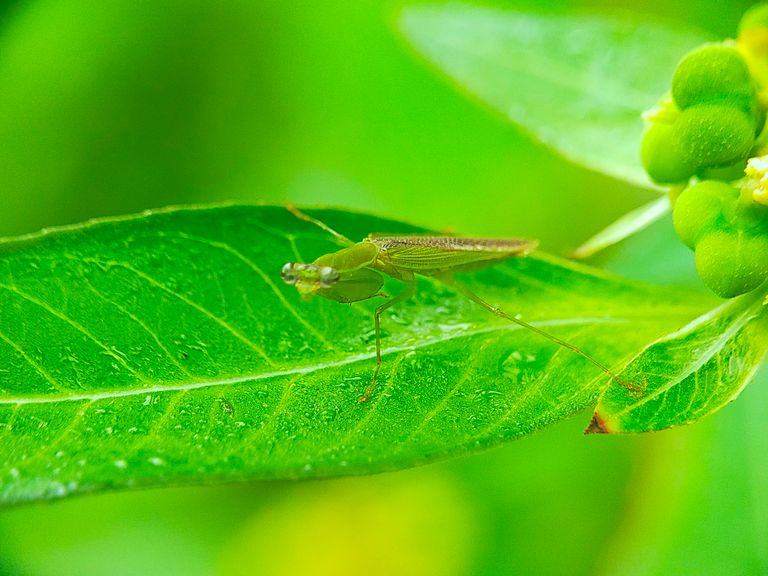
This is all I can say more and less I apologize, hopefully it will be useful for me, and hopefully it will be useful for all readers in general, thank you for visiting my blog, don't forget to follow and vote for my posts. , and one more thing, don't forget to share this post with other friends.
Thank you for visiting my blog, don't forget to follow and vote for me to post, and others don't forget to share this post with other friends.
Greetings to all on Blurtter...
** Your post has been upvoted (3.31 %) **
Curation Trail is Open!
Join Trail Here
Delegate more BP for bigger Upvote + Daily BLURT 😉
Delegate BP Here
Upvote
https://blurtblock.herokuapp.com/blurt/upvote
Thank you 🙂 @tomoyan
Congratulations, your post has been curated by @r2cornell, a curating account for @R2cornell's Discord Community.